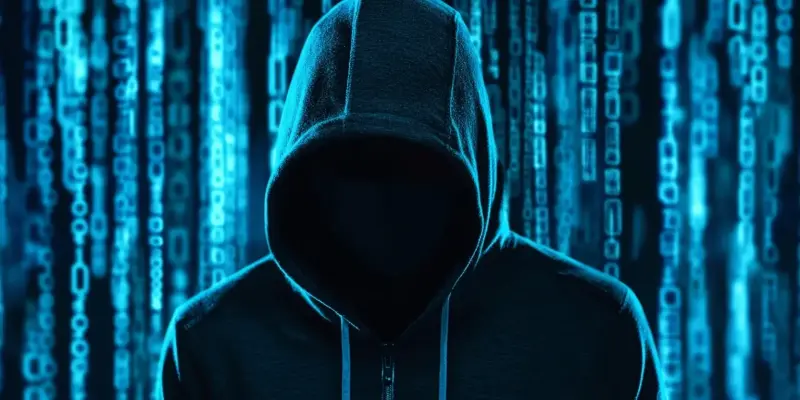The increasing frequency and sophistication of cyber attacks targeting Ukraine and Europe have raised significant concerns among cybersecurity experts and government agencies. The primary focus of these attacks has been to infiltrate critical military and governmental networks to steal sensitive information, disrupt operations, and potentially sabotage infrastructure. This surge in cyber activity, largely driven by geopolitical tensions, has prompted a reevaluation of current cybersecurity strategies and defenses. The identification of advanced malware campaigns, particularly those aimed at Ukraine’s eastern regions, highlights the evolving nature of cyber threats and the pressing need for robust protective measures.
Information-Stealing Malware and Phishing Campaigns
Recent cyber attacks on Ukraine have predominantly involved information-stealing malware campaigns deployed through malicious Excel files. The Computer Emergency Response Team of Ukraine (CERT-UA) has identified these sophisticated attacks, which primarily target military formations, law enforcement agencies, and local self-government bodies, particularly near Ukraine’s eastern border. The attackers utilize phishing emails containing macro-enabled Microsoft Excel spreadsheets (XLSM). When these macro-enabled files are opened, they deploy two types of malware: a PowerShell script from the PSSW100AVB GitHub repository that opens a reverse shell and a newly identified information stealer named GIFTEDCROOK.
GIFTEDCROOK, written in C/C++, targets web browsers such as Google Chrome, Microsoft Edge, and Mozilla Firefox. It is designed to steal sensitive data, including cookies, browsing history, and authentication information. This type of malware can compromise the integrity of critical data and weaken the security of the affected systems. The phishing emails are often sent from compromised accounts, lending a sense of legitimacy that increases the likelihood of users opening the attachments. CERT-UA attributes these activities to threat cluster UAC-0226, although it has not been linked to a specific country. The attackers’ primary goal appears to be the collection of valuable information that could be used for espionage and strategic purposes.
Targeted Attacks on Government and Military Organizations
In addition to the malware campaigns, there has been a separate phishing campaign linked to a Russia-nexus espionage actor, UNC5837, targeting European government and military organizations. This campaign uses signed .RDP file attachments to establish Remote Desktop Protocol connections from victim machines. By employing resource redirection and RemoteApps, the attackers can steal files, capture clipboard data, and potentially gain control over critical systems. CERT-UA, in conjunction with AWS and Microsoft, has tracked this activity as UAC-0215, and Trend Micro has attributed it to the Russian state-sponsored group APT29.
The report mentions the use of the open-source tool PyRDP in the RDP campaign to automate malicious activities and steal sensitive data such as passwords. This sophisticated approach indicates a high level of planning and technical expertise on the part of the attackers. UNC5837’s primary goal appears to be espionage and file theft, aiming to gain access to sensitive information that could be leveraged to compromise national security. The involvement of state-sponsored actors in these cyber attacks underscores the serious threat posed by organized and well-funded cybercriminal groups.
Sophisticated Techniques and Evolving Threats
Phishing campaigns have continued to evolve, with attackers employing increasingly sophisticated techniques to distribute malware. One notable method involves the use of fake CAPTCHAs and Cloudflare Turnstile to distribute Legion Loader (aka Satacom). This malware then deploys a malicious Chromium-based browser extension named “Save to Google Drive.” This drive-by download infection technique involves redirecting users searching for specific documents through several CAPTCHA steps before ultimately downloading the malware. Such methods exploit the trust users place in seemingly benign interactions, making it more challenging to detect and prevent these attacks.
Legion Loader uses PowerShell scripts to install the rogue browser extension, facilitating the theft of sensitive information from the victims’ browsers. This type of malware can silently collect data, providing attackers with a wealth of information that can be used for further malicious activities. The use of legitimate-looking web interactions as a delivery method illustrates how attackers are continuously adapting to bypass traditional security measures. This ongoing evolution of phishing and malware tactics highlights the importance of staying informed about the latest cybersecurity threats and implementing proactive defenses.
Escalation in Cyber Attacks and Defensive Measures
The recent surge in cyber attacks against Ukrainian and European institutions underscores the need for enhanced cybersecurity measures. The focus on espionage and data theft by sophisticated cybercriminal groups necessitates a multi-faceted approach to defense. Government agencies and private sector organizations must invest in advanced security technologies, educate employees about the latest phishing tactics, and establish comprehensive incident response plans. Collaboration between national and international cybersecurity entities is also crucial to sharing threat intelligence and coordinating responses to emerging threats. The involvement of state-sponsored actors amplifies the complexity of the threat landscape, requiring a concerted effort to fortify defenses against these persistent and evolving attacks.
Preparing for Future Threats
The rise in cyber attacks targeting Ukraine and Europe has become a major concern for cybersecurity experts and government agencies. These attacks have grown in frequency and sophistication, with the main goal being to breach critical military and government networks. The cyber criminals behind these attacks aim to steal sensitive information, disrupt operations, and potentially sabotage key infrastructure. Geopolitical tensions are largely driving this spike in cyber activity, prompting a thorough reevaluation of existing cybersecurity strategies and defenses. Experts have identified advanced malware campaigns, particularly those focusing on Ukraine’s eastern regions. These findings underscore the evolving nature of cyber threats and the urgent need for robust protective measures. As the tactics of cyber attackers become more refined, the commitment to improving cybersecurity infrastructure must be strengthened to safeguard against these persistent and evolving threats. The ongoing situation calls for increased vigilance and innovation in cybersecurity to protect vital assets and maintain stability in the region.

